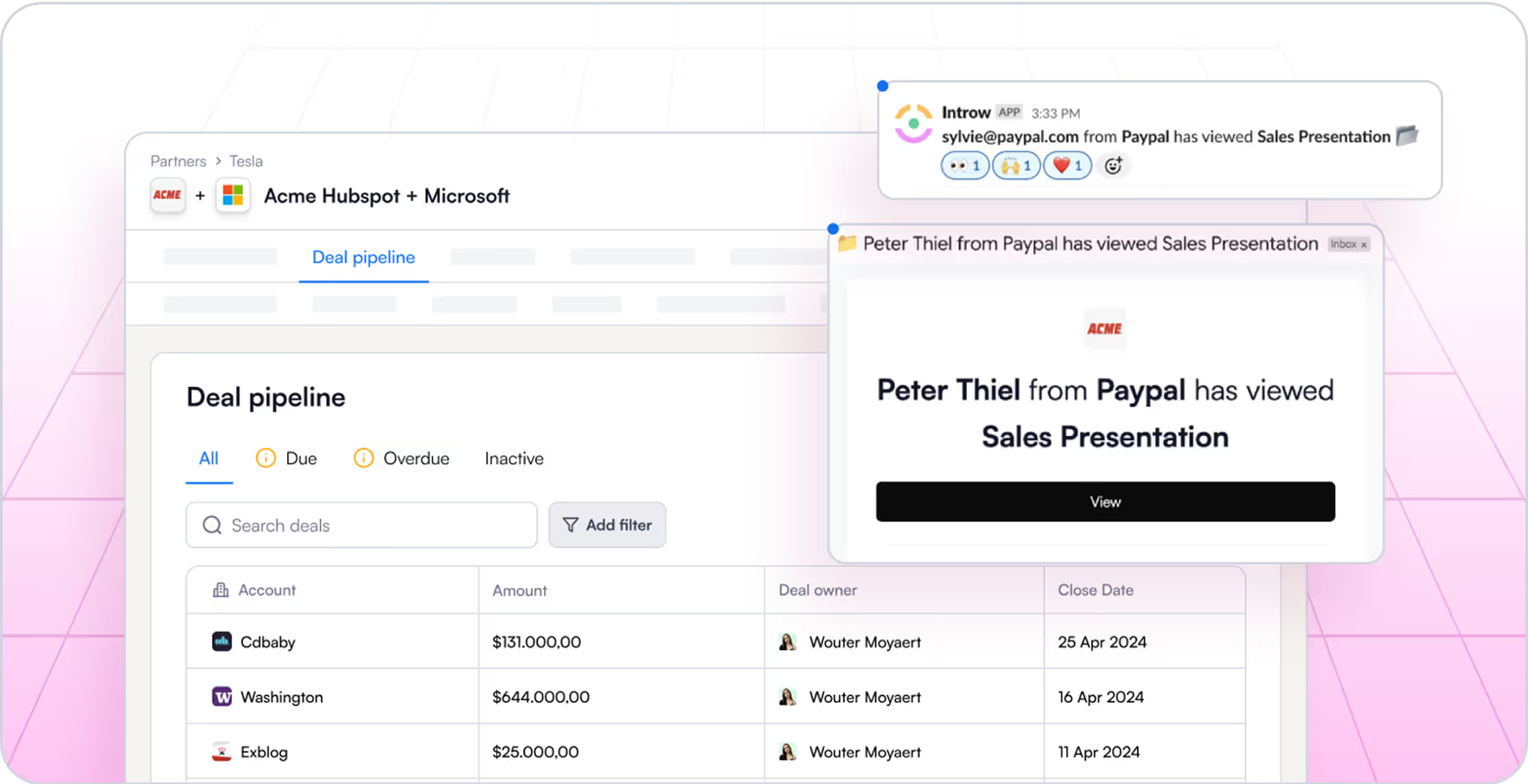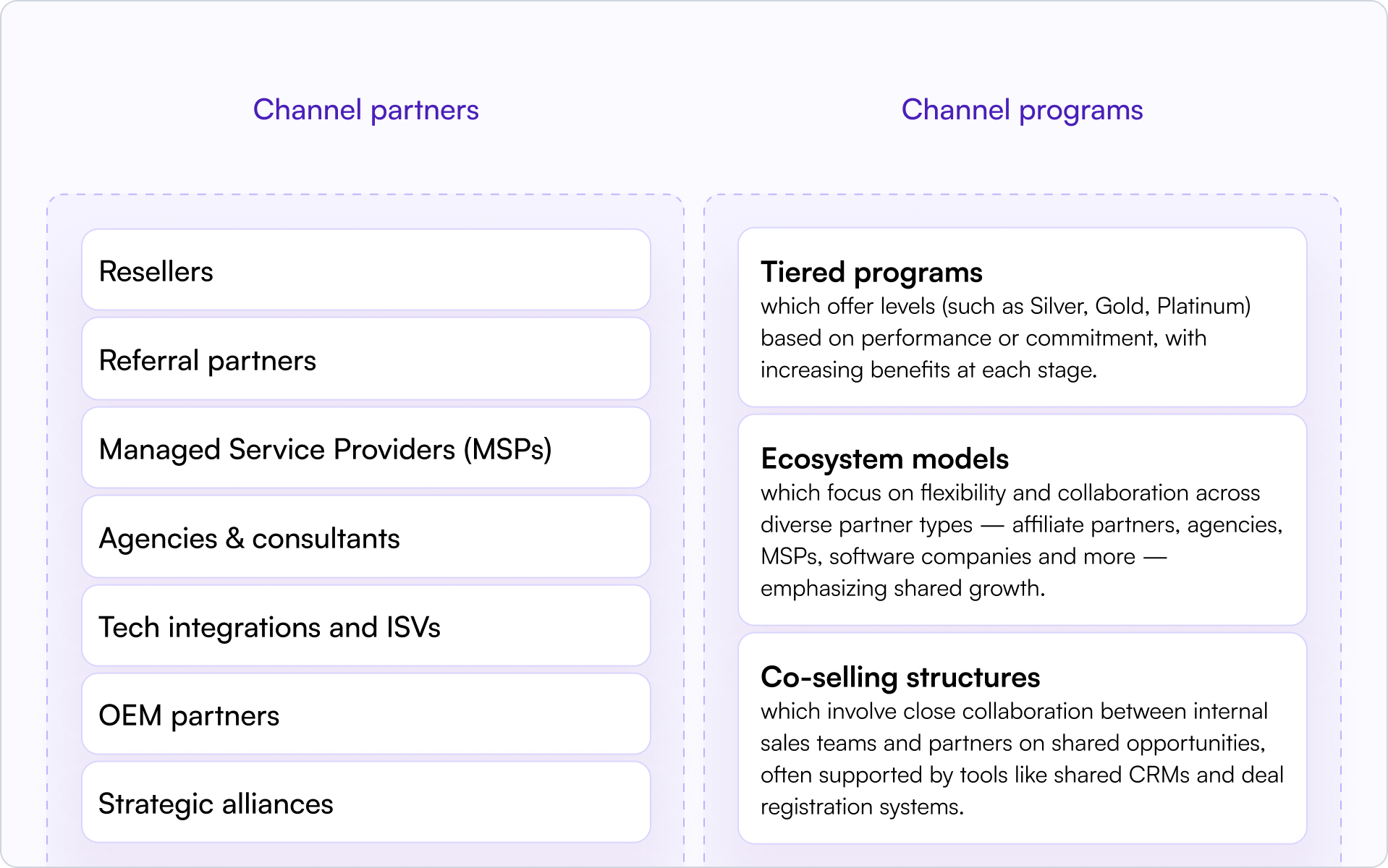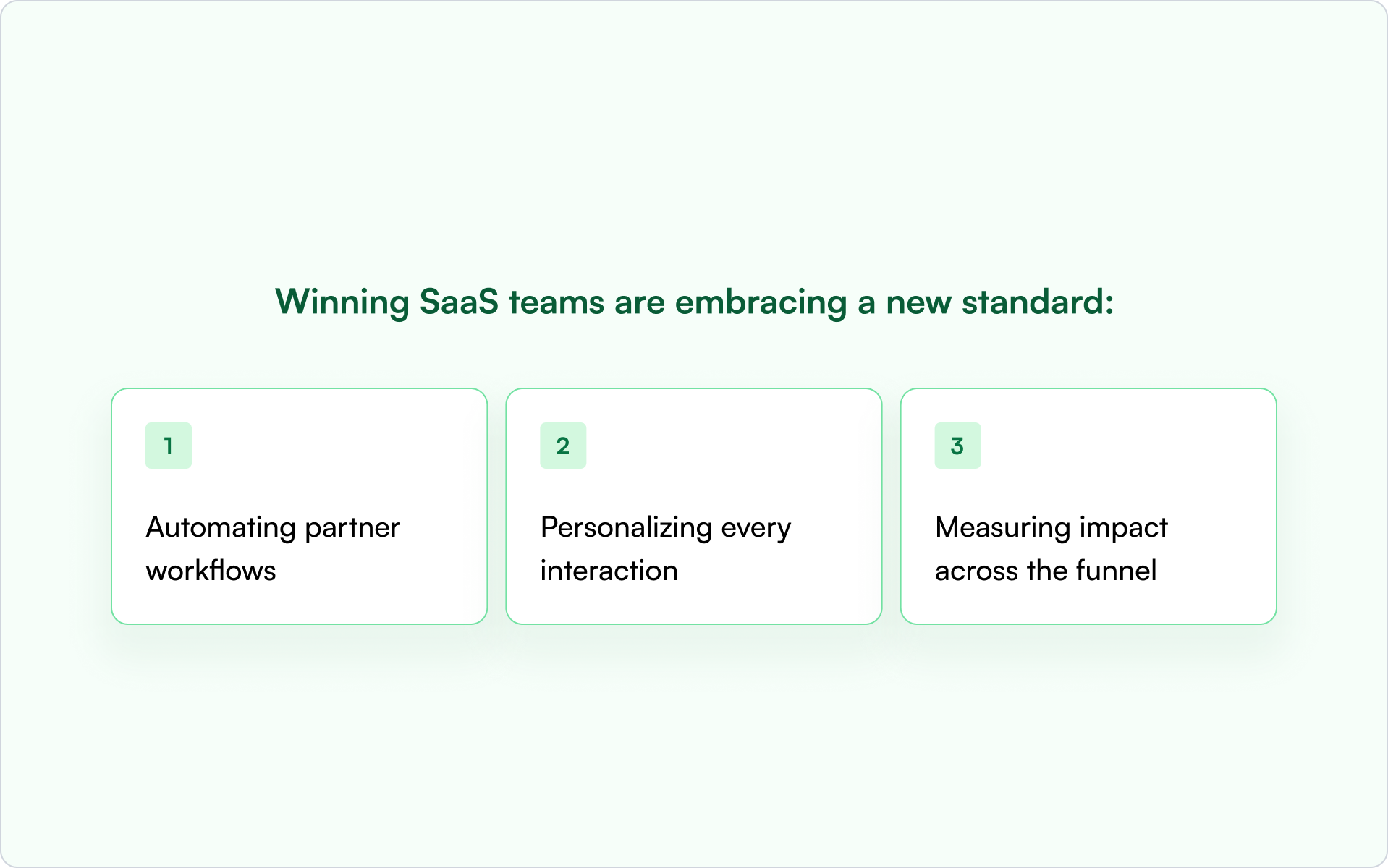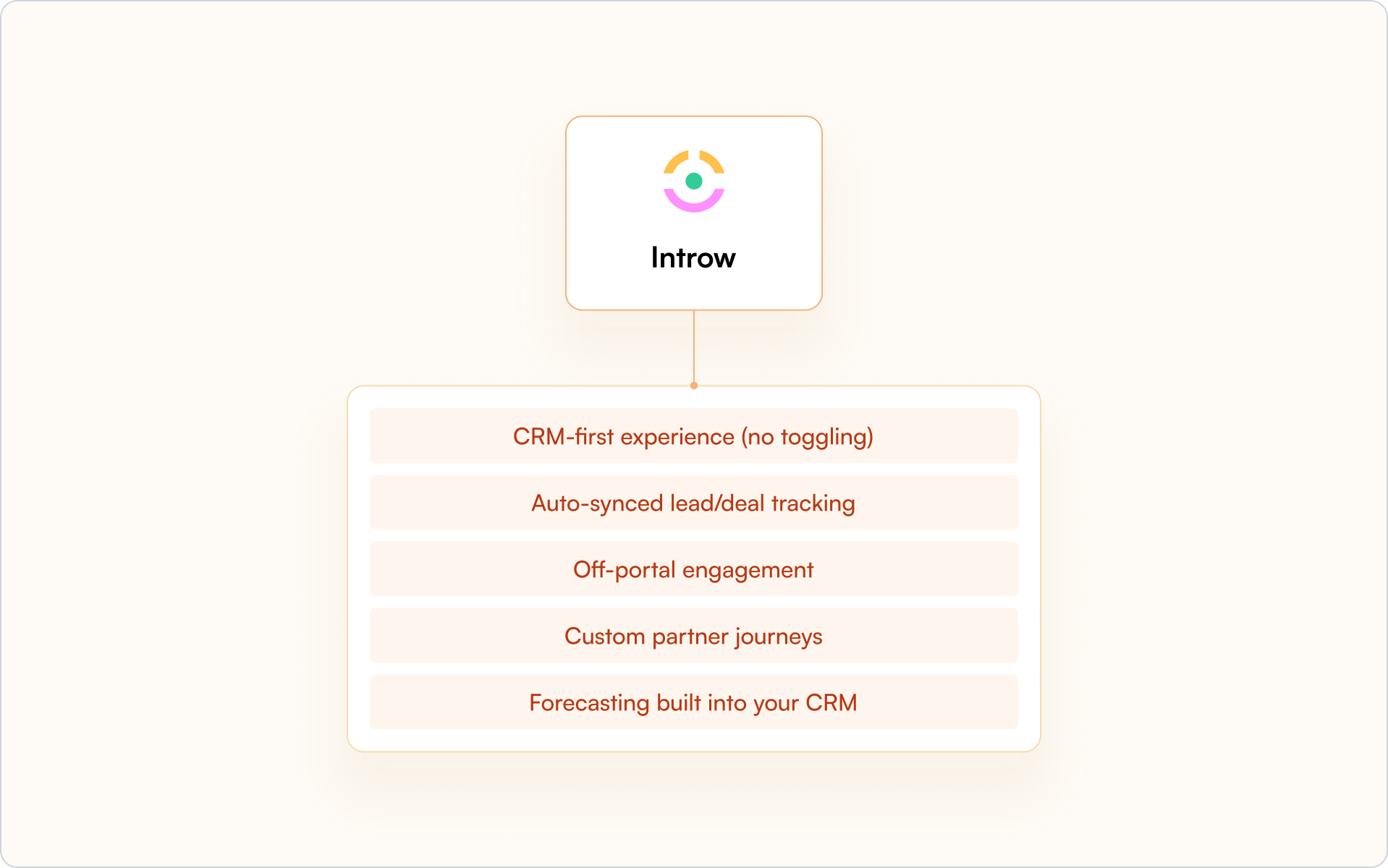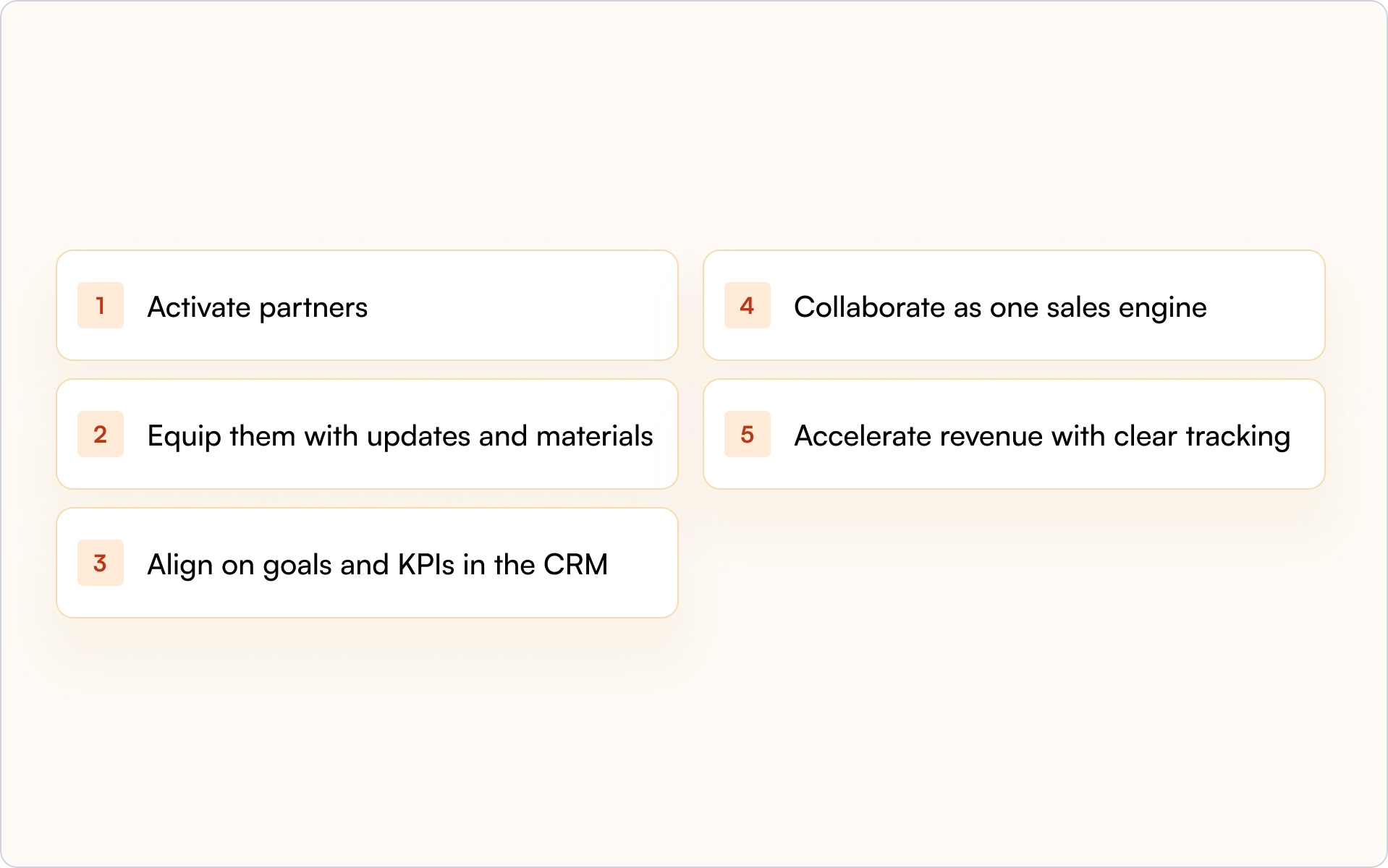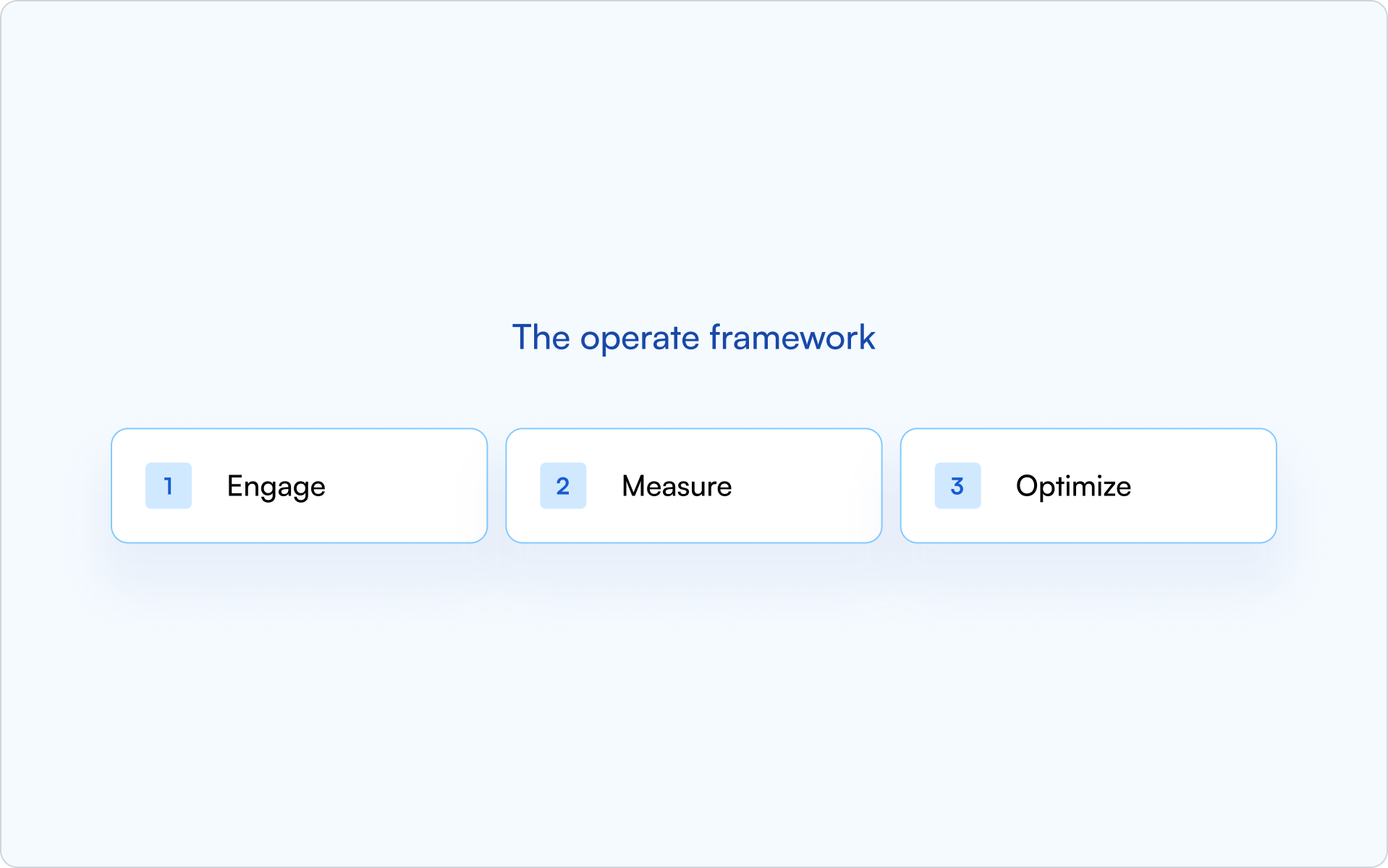Effective partner engagement is the backbone of every successful SaaS partner program.
In 2026, winning teams are moving far beyond checklists.
Instead, they're harnessing the power of automation, smart communication, and data-driven strategies to boost partner activity, pipeline, and loyalty.
In this guide, you'll discover practical frameworks, best practices, and modern tools to transform your partner engagement into collaborative relationships and a real revenue driver.
Why Partner Engagement Still Matters in 2026
Let’s be honest: in SaaS these days, just signing a new partner isn’t enough for mutual success. The competition’s intense, partners have more choices, and with everyone working remotely or in hybrid teams, it’s all too easy for those relationships to fizzle out.
That’s why real partner engagement matters now more than ever in building a strong partner community . If you’re not keeping partners in the loop, helping them stay active, and making sure you’re all pulling in the same direction, it doesn’t take long for deals to go missing or for enthusiasm to drop off.
The best SaaS companies get this. They don’t just tick the box on onboarding and move on. Instead, they make it simple for partners to stay connected - automating key updates, sharing useful content, and actually listening to feedback. And they track what really counts: things like registered deals, joint selling, and genuine collaboration - not just who logged in last week.
The upside? You get better teamwork, a stronger pipeline, and partnerships that actually last. At the end of the day, partner engagement isn’t just some metric to report on—it’s what sets you apart.
What Is Partner Engagement?
Before diving into how to maximize partner engagement, let's establish a working definition for B2B SaaS.
In B2B SaaS, partner engagement refers to the ongoing, two-way interaction between a company and its partners that drives real business outcomes like pipeline growth and revenue.
Unlike enablement (which focuses on training) or activity (which tracks basic actions), engagement is about meaningful participation.
Engaged partners don't just watch webinars — they join calls, submit qualified deals, and actively support marketing campaigns.
Simply put, engaged partners are those who consistently show up, contribute, and help move the business forward.
7 Proven Strategies for Maximizing Partner Engagement in 2026
Looking to boost partner performance and drive more value from your ecosystem in 2026?
These seven proven strategies will help you cut through the noise, deepen relationships, and keep your partners truly engaged.

1. Meet Partners Where They Work
Meeting partners where they work means engaging them through the tools and platforms they use daily — whether that's Slack, email, or CRM systems.
This approach reduces friction, boosts consistency, and makes interactions seamless, increasing the chances that partners will respond and participate — your desired outcome.
Think about it.
Would you be more likely to engage with a company if:
1. You needed to find, log into, and navigate an unfamiliar portal
2. They simply showed up on an app you were already using.
When companies integrate partner communications and resources into familiar environments, partners stay informed without disrupting their workflow.
What's more, real-time collaboration and faster decision-making become a reality.
At Introw, we understand that meeting partners where they work fosters stronger connections, boosts engagement, and drives better results.
That's why our sophisticated partner relationship management (PRM) platform, Introw, enables off-portal collaboration.
Indeed, by integrating with tools like Slack and email, Introw automates deal updates, announcements, and notifications, ensuring partners stay informed and engaged in real-time.
This approach reduces friction, enhances responsiveness, and maintains alignment between teams and partners, all while keeping your CRM as the single source of truth.
2. Automate Your Updates & Deal Notifications
Automating updates and deal notifications keeps partners up to speed without the need for manual follow-ups.
By automatically sharing deal status changes, wins, losses, and campaign news, you eliminate delays and reduce the risk of miscommunication.
It's an effective way to maintain productive relationships.
For example, Introw sends real-time notifications to partners at every stage of the sales cycle, so they always know where deals stand without you having to chase.
As well as saving time on your end, this boosts partner confidence and responsiveness, helping to keep the sales pipeline moving smoothly and ensuring everyone stays aligned on priorities.
3. Personalize Communications and Resources
Personalization is crucial when it comes to keeping partners engaged and motivated.
Start by segmenting your partners based on:
- Type
- Tier
- Region
This partner engagement model empowers you to deliver targeted content, offers, and training that will resonate much more than if you applied the same initiatives to every partner.
Indeed, while one-size-fits-all approaches often fall short, tailored messaging demonstrates that you understand their business and challenges.
The results?
Increased partner satisfaction, a rise in meaningful interactions, and more active participation.
4. Enable Frictionless Deal Registration and Tracking
Traditionally, deal registration and tracking slowed down partner engagement due to time-consuming tasks and administrative barriers.
However, with Introw, it's easy to eliminate friction from these processes.
For instance, it empowers you to simplify forms and allow submissions without logins, making it much faster and easier for partners to register deals.
Furthermore, there's no need for laborious data collection or manual analysis anymore.
Introw enables you to auto-sync data with CRMs like Salesforce or HubSpot, giving you instant visibility into partner activity and pipeline health.
This seamless process reduces admin headaches, speeds up deal management, and keeps everyone aligned — empowering partners to focus on selling and helping your team monitor progress effortlessly.
5. Run Targeted Campaigns and Announcements
Well-timed, personalized campaigns and announcements not only drive action but also show partners you're invested in their success.
This proactive communication fosters productive relationships and boosts overall partner performance — critical for SaaS growth.
Successful targeted campaigns start with segmentation (as outlined in strategy 3).
In terms of the content itself, schedule and send updates about new features, incentives (like SPIFFs), or upcoming deadlines, using branded templates for consistency.
And this content must, of course, be tailored towards the group of partners you're targeting with your campaign.
For example, if you're launching exciting new incentive programs exclusively for your premium-tier partners, you'll only want to run that campaign for the premium segment of your audience.
Then, leverage campaign analytics to track opens and clicks, helping you to understand what resonates and who needs follow-up.
Finally, automate follow-ups based on engagement in order to encourage partners to take the desired action.
6. Track Engagement — Don't Rely on Gut Feel
Stop the guesswork — use data to understand channel partner engagement.
So how to measure partner engagement?
Start by tracking key actions like:
- Portal visits
- Content downloads
- Email replies
- Deal submissions.
You can use Introw's dashboards to quickly identify which partners are active, dormant, or high-performing.
This knowledge empowers you to tailor support, optimize outreach, and prioritize efforts where they'll drive the most impact.
7. Review, Optimize, and Celebrate Success
In 2026, this partner engagement process is absolutely vital if you are to maintain a competitive edge.
Hold regular partner reviews using real performance data to identify what's working and where to improve.
Use these sessions to share success stories, spotlight top performers, and highlight best practices.
Recognizing achievements fosters loyalty and motivates others, creating a culture of continuous improvement and stronger engagement across your partner ecosystem.
6 Pitfalls to Avoid in 2026
We've covered which partner engagement activities you should be doing — but what tactics should you avoid in 2026?
Read on for six pitfalls to swerve when it comes to partner engagement.

1. One-Size-Fits-All Messaging
Treating all partners the same leads to disengagement.
It certainly won't make partners feel valued.
Do this, and you'll likely see significantly lower open and click rates than if you were running a targeted campaign.
Remember — in 2026, partners expect personalized, relevant messaging based on their tier, industry, or performance.
Anything less may cause them to lose interest in working with you or even dent their trust in your brand.
2. Manual Engagement Tracking
Using manual spreadsheets and email chains to track partner activity consumes a significant amount of time and invites human error.
In 2026, sophisticated tools like Introw empower you to automate engagement tracking across your entire tech stack, providing the visibility and scalability you need to succeed.
3. Ignoring Non-Portal Partners
Focusing solely on portal-active partners means you're overlooking a significant portion of your ecosystem.
Instead, engage partners where they are.
This can be done via email, on Slack, at events, or through embedded touchpoints.
4. Not Tying Engagement to Revenue
Tracking partner activity is essential — but if you're not connecting that activity to real revenue results, you're missing the bigger picture.
In 2026, successful SaaS brands align engagement key performance indicators (like portal logins, content downloads, or training completions) with tangible outcomes such as leads generated, deals influenced, or revenue closed.
This enables you to demonstrate the ROI of your partner program, prioritize high-impact partners, and justify investments in enablement and support.
Without this alignment, it's easy to overvalue busy work and undervalue genuine contributors — in other words, effective optimization becomes harder.
5. Overloading Partners with Information
In the race to keep partners informed, it's easy to overwhelm them with too many updates, tools, and campaigns — especially when communications come from multiple, uncoordinated teams.
But in 2026, attention is a scarce resource, and clarity wins.
After all, when partners receive frequent, unfocused messages, they tend to tune out, miss important details and may feel uncertain about what to prioritize.
SaaS brands should streamline communication channels, prioritize high-impact content, and curate messaging based on what's most relevant to each partner's goals or stage in the journey.
6. Infrequent Check-Ins and Reviews
Waiting for quarterly or annual business reviews to connect with partners and discuss your business objectives, joint business plans, and mutual interests will not cut it in 2026.
In SaaS, things move quickly - if partners go too long without updates or support, it’s easy to lose momentum or miss out on deals.
And when it comes to partner programs, mutual support is vital.
Regular, data-backed check-ins (monthly or even biweekly for key partners) help you stay in sync on joint initiatives, reinforce goals, and identify blockers early.
These reviews don't have to be formal — even short, structured syncs that include performance insights, pipeline updates, and support needs can go a long way to maintaining a mutually beneficial relationship.
Tech Stack & Frameworks for Modern Partner Engagement
Strong partner engagement requires more than a static portal — it demands flexible, data-driven tools that integrate seamlessly with your existing workflows and those of your partners.
Indeed, old-school partner portals are often clunky, login-gated, and siloed — leading to low adoption and limited insight.
In contrast, modern CRM-first tools like Introw deliver partner content and campaigns directly through email or embed them in sales workflows, making engagement effortless and trackable.
So, when evaluating your tech stack, look for solutions that offer:
- Automation
- CRM sync
- Real-time engagement tracking
- No-login access
- Off-portal features
Then drive results with an engage>measure>optimize partner engagement framework:
- Engage partners where they already work with targeted, value-driven outreach.
- Measure activity across all touchpoints — both on- and off-portal
- Optimize based on performance data, refining messaging, and support.
With the right stack and channel partner engagement strategy, you can drive partner engagement and create a scalable growth engine.

How Introw Simplifies and Supercharges Partner Engagement
Introw revolutionizes partner engagement by automating and streamlining key processes, ensuring that both partners and internal teams operate efficiently and effectively.
Here's how.
Automated, Multi-Channel Updates
Introw delivers timely updates to partners via email and Slack, eliminating the need for them to log into a portal.
This approach ensures that partners remain informed and engaged without the friction of additional logins.
Built-In Campaign Scheduling, Partner Segmentation, and Tracking
The platform also allows for the scheduling of campaigns tailored to specific partner segments.
With integrated tracking, teams can monitor the performance of these campaigns in real time and adjust their strategies as needed to maximize impact.
Real-Time Dashboards
Introw's dynamic dashboards offer insights into partner engagement levels, content effectiveness, and revenue contributions.
This real-time visibility enables you to identify top-performing partners and pinpoint areas that require attention.
And being able to access this real-time information at the touch of a button empowers you to swiftly and consistently optimize your strategy, whether that's implementing more of what's working or troubleshooting problem areas.
Role-Based Value
Different roles within an organization benefit from Introw's features:
- Channel Managers gain insights into partner journey and performance.
- RevOps receives synchronized data between Introw and CRM systems, facilitating accurate reporting.
- CROs can directly link partner engagement metrics to pipeline outcomes, aligning partner activities with revenue goals.
Experience firsthand how Introw can transform your partner engagement strategy. Request a demo today and see the difference.

Conclusion
Remember — engagement is the #1 lever for a healthy, revenue-driven, successful partner program in 2026.
To increase partner engagement, maintain your competitive advantage and drive revenue growth, regularly review your partner engagement strategies — consider what you can automate, measure, or personalize today.
Leveraging technology and data ensures your joint efforts are efficient, targeted, and impactful.
So start optimizing your partner program today and unlock its full potential.
To supercharge your partner engagement and boost results, try Introw — a sophisticated platform designed to simplify engagement through automation, real-time insights, and seamless CRM integration.
How Can I Improve Partner Response Rates in 2026?
Boosting partner response rates starts with clear, relevant, and timely communication. Partnership leaders must tailor their outreach to each partner's specific goals and focus areas rather than sending generic blasts. Instead, craft engaging subject lines, keep messages concise, and highlight the value or action required. Setting expectations around response times and following up thoughtfully helps too. Lastly, make it super easy to respond! Scheduling tools, partner incentives, and simple feedback forms can all elevate response rates.
Can I Automate Engagement Without a Portal?
Engagement automation is possible without a portal. Indeed, this is a key part of building strong partner relationships. Using partner engagement tools like email marketing platforms (e.g. HubSpot or Mailchimp), CRM systems, and workflow automation tools (like Zapier), you can schedule regular updates, trigger messages based on partner activity, and track interactions. However, when automating engagement without a portal, it's vital you focus on personalizing content where possible and balancing automation with a human touch to keep communication meaningful and relevant. However, a partner portal makes engagement and engagement automation much easier — and typically more effective, too. It gives partners easy access to partner training, marketing materials, deal registration, and ongoing support, all in one place. From an automation standpoint, it allows you to trigger onboarding workflows, send tailored updates, track partner activity, and reward engagement (for example, with points or badges). This not only saves time but also keeps partners consistently informed, empowered, and motivated to take action.
How Does Introw Measure Partner Activity?
It's vital partner managers track the impact of their efforts to improve partner engagement — and in 2026, this doesn't need to be difficult. Introw tracks partner engagement through real-time dashboards that monitor key metrics such as content interactions, deal registrations, and lead submissions. By integrating with CRM platforms like HubSpot and Salesforce, Introw provides a unified view of partner activities. This empowers companies to assess performance and identify high-impact business partners.
What Results Can I Expect From Using Introw?
Users of Introw have reported significant improvements in B2B partner engagement and operational efficiency after implementing the platform. For instance, Sandsiv experienced a 30% increase in partner engagement after implementing Introw's partner portal. Furthermore, after Factorial turned to Introw for partner management assistance with its hyper-scaling partner network, it reported enhanced partner satisfaction, better revenue tracking and forecasting, and increased operational efficiency.


.svg)



















